
Gerrit Rietveld was a Dutch furniture designer and architect.
The year 1788 in architecture involved some significant events.

Coenraad Johannes van Houten was a Dutch chemist and chocolate maker known for the treatment of cocoa mass with alkaline salts to remove the bitter taste and make cocoa solids more water-soluble; the resulting product is still called "Dutch process chocolate". He is also credited with introducing a method for pressing the fat from roasted cocoa beans, though this was in fact his father, Casparus van Houten's invention.

The Amsterdam School is a style of architecture that arose from 1910 through about 1930 in the Netherlands. The Amsterdam School movement is part of international Expressionist architecture, sometimes linked to German Brick Expressionism.
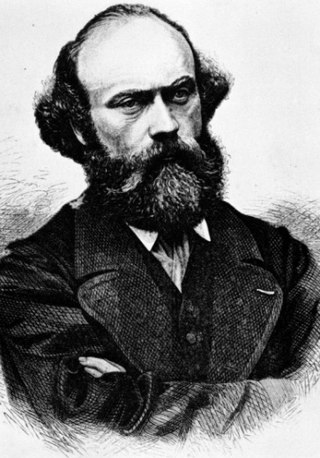
Petrus Josephus Hubertus "Pierre" Cuypers was a Dutch architect. His name is most frequently associated with the Amsterdam Central Station (1881–1889) and the Rijksmuseum (1876–1885), both in Amsterdam. More representative for his oeuvre, however, are numerous churches, of which he designed more than 100. Moreover, he restored many monuments.

Berend Tobia Boeyinga was a Dutch architect noted for his Calvinist church buildings and as a practicing member of the Amsterdam School.
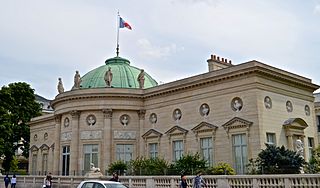
The Palais de la Légion d'honneur is a historic building on the Left Bank of the River Seine in Paris, France. It houses the Musée de la Légion d'honneur and is the seat of the Légion d'honneur, the highest French order of merit.
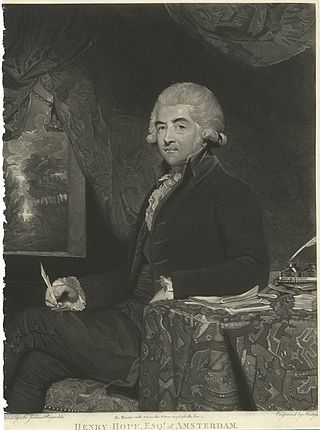
Henry Hope (1735–1811) was an Amsterdam merchant banker born in Braintree, Province of Massachusetts Bay. He emigrated to the Netherlands to join the family business Hope & Co. at a young age. From 1779, Henry became the manager of Hope & Co. and he participated in the firm for about a third from 1782. He is considered to be as great a genius as his uncle Thomas Hope. In 1786 Adam Smith dedicated the fourth edition of his book The Wealth of Nations to Henry Hope in hopes of increasing his readership:

Dutch architecture has played an important role in the international discourse on architecture in three eras. The first of these was during the 17th century, when the Dutch empire was at the height of its power. The second was in the first half of the 20th century, during development of modernism. The third is not concluded and involves many contemporary Dutch architects who are achieving global prestige.
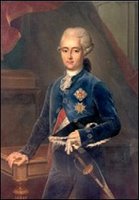
Frederick III, Prince of Salm-Kyrburg was the prince of Salm-Kyrburg, Hornes and Overijse, Gemen and Count of Solre-le-Château. He was the eldest son of Philip Joseph, Prince of Salm-Kyrburg and Princess Maria Theresa of Hornes, and he grew up at the French court. Through his mother, the eldest daughter of Maximilian, Prince of Hornes, he inherited all the possessions of the Hornes family. He held the title from 1779 to 1794.
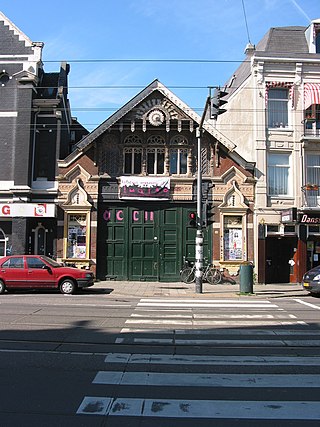
The OCCII is a venue for alternative and independent music at Amstelveenseweg 134, in Amsterdam, Netherlands.
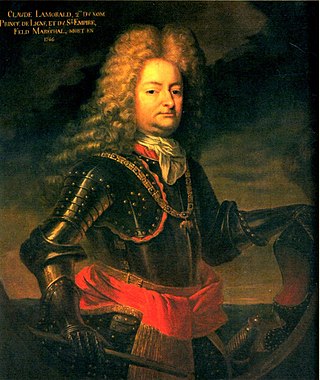
Claude Lamoral, Prince of Ligne was a Field marshal and sixth Prince in the House of Ligne.

The Anantara Grand Hotel Krasnapolsky, often informally referred to as Kras, is a five-star hotel located on Dam Square in central Amsterdam, Netherlands. Founded in 1865, the hotel has 451 rooms, a convention center, restaurants and a pier for boats on the Oudezijds Voorburgwal canal.

Weesperzijde (Amsterdam) is a neighbourhood of Amsterdam, Netherlands, aligned along the east side of Amstelriver. It is a well-to-do residential area with a familial atmosphere, characterised by houses built during the last turn of centuries, some by famous Dutch architects like Dolf van Gendt and Abraham Salm.

Abraham van der Hart was an 18th-century architect from the Northern Netherlands.

Adam, Abraham, or Adriaen van Salm, also van (der) Salm (c.1660–1720), was a Dutch draftsman and painter. He produced primarily marine art. These were done in pen with India ink applied to a cloth or a pre-processed panel.
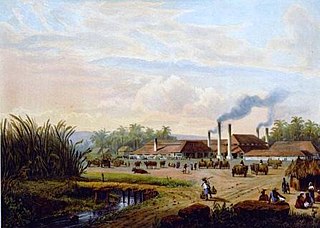
Abram, or Ab Salm was a Dutch painter.
Abraham Salm may refer to:

Jacob Nienhuys was the founder of tobacco producer Deli Company on a plantation established on a land concession from the Sultanate of Deli in Sumatra during the era of the Dutch East Indies. He returned to the Netherlands after he was indicted over the death of 7 plantation workers. Jacob Theodoor Cremer took over administration of the company and Nienhuys maintained a role at the company becoming a very wealthy man as the company grew and its stock price increased.



















